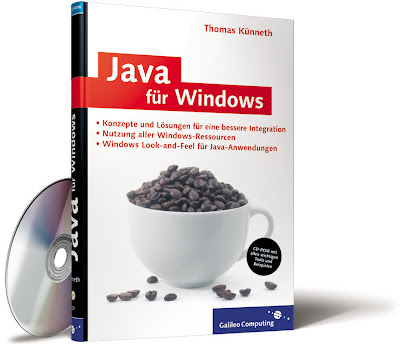NamedQuery is a JPA-Feature which was automatically created by NetBeans when you've created your Enitity-Class. It's a simple JPQL statement which usually will be used more often in your application.
Here is the code from the ActorManager:
package com.blogspot.sageniuz;
import java.util.Iterator;
import java.util.List;
import javax.persistence.EntityManager;
import javax.persistence.EntityManagerFactory;
import javax.persistence.Query;
/**
* Actor-Manager
* @author Claus Polanka
*/
public class ActorManager {
private EntityManager em;
public ActorManager(EntityManagerFactory emf) {
em = emf.createEntityManager();
}
public void createActor(ActorGenEntity actor) {
em.getTransaction().begin();
em.persist(actor);
em.getTransaction().commit();
}
public ActorGenEntity findById(Integer id) {
return em.find(ActorGenEntity.class, id);
}
public List findByFirstname(String firstname) {
Query query = em.createNamedQuery("ActorGenEntity.findByFirstname");
query.setParameter(firstname, em);
List listOfActors = query.getResultList();
return listOfActors;
}
public List findByLastname(String lastname) {
Query query = em.createNamedQuery("ActorGenEntity.findByLastname");
query.setParameter(lastname, em);
List listOfActors = query.getResultList();
return listOfActors;
}
public void updateActor(ActorGenEntity actor) {
em.getTransaction().begin();
em.merge(actor);
em.getTransaction().commit();
}
public void removeActor(ActorGenEntity actor) {
em.getTransaction().begin();
em.remove(actor);
em.getTransaction().commit();
}
public List getAll() {
Query query = em.createQuery("select a from ActorGenEntity a");
List list = query.getResultList();
return list;
}
public void removeAll() {
em.getTransaction().begin();
Query query = em.createQuery("select a from ActorGenEntity a");
List list = query.getResultList();
Iterator it = list.iterator();
while (it.hasNext()) {
ActorGenEntity actor = it.next();
em.remove(actor);
}
em.getTransaction().commit();
}
public void close() {
em.close();
}
}
Testing the application is the next thing to do, so let's create a JUnit test-clase. Before you start implementing it check if you have already imported you database-driver or you will get an exception when executing your JUnit-test.


Here is the code for my test-class:
package com.blogspot.sageniuz;
import java.util.List;
import javax.persistence.EntityManager;
import javax.persistence.EntityManagerFactory;
import javax.persistence.Persistence;
import junit.framework.TestCase;
/**
* CRUD Test for Actor-Class.
* @author Claus Polanka
*/
public class TestActorManager extends TestCase {
private ActorManager am;
private EntityManager em;
private EntityManagerFactory emf;
private static final ActorGenEntity TESTACTOR1 = new ActorGenEntity(1, "Claus", "Polanka");
private static final ActorGenEntity TESTACTOR2 = new ActorGenEntity(2, "Barbara", "Ebinger");
private static final ActorGenEntity TESTACTOR3 = new ActorGenEntity(3, "Irene", "Polanka");
public TestActorManager(String testName) {
super(testName);
}
@Override
protected void setUp() throws Exception {
emf = Persistence.createEntityManagerFactory("pu-medienverwaltung");
em = emf.createEntityManager();
am = new ActorManager(emf);
}
@Override
protected void tearDown() throws Exception {
am.close();
em.close();
emf.close();
}
public void testCRUD() {
am.createActor(TESTACTOR1);
ActorGenEntity actor = am.findById(1);
assertEquals(actor.getFirstname(), "Claus");
actor.setFirstname("Barbara");
am.updateActor(actor);
actor = am.findById(1);
assertEquals(actor.getFirstname(), "Barbara");
am.createActor(TESTACTOR2);
am.createActor(TESTACTOR3);
List list = am.getAll();
assertEquals(list.size(), 3);
am.removeAll();
list = am.getAll();
assertEquals(list.size(), 0);
}
}
The following picture shows my project-tree and how your project-structure should also look like.

After running your test you should see something like the following.

In the next days I will test more of the JPA features like support for derived Entities and stuff like that.
Cheers




























